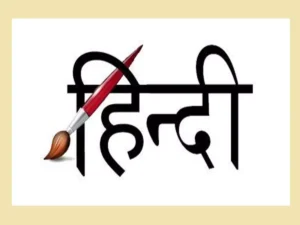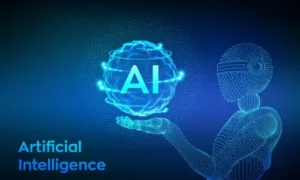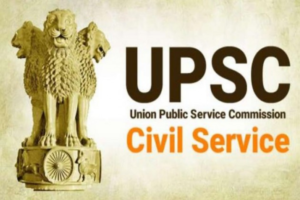UKPSC Exam Syllabus
The Uttarakhand Public Service Commission, popularly known as the UKPSC, is the state agency that conducts the Civil Services Examination for entry-level posts in the Civil Services of Uttarakhand. With the exam approaching soon, several aspirants are looking for the UKPSC syllabus 2023.
Candidates can also visit the linked article and get details about the upcoming
government exams that comprise current affairs and general awareness as an important topic in the syllabus.
UKPSC Exam Syllabus 2023
Examinations conducted by the Uttarakhand Public Service Commission for direct recruitment include three stages:
- Combined Civil/Upper Subordinate Preliminary Examination
- Combined Civil/Upper Subordinate Main Examination
- Personal Interview
UKPSC Prelims Syllabus
The exam pattern of UKPSC Prelims:
| UKPSC Prelims Exam Pattern | ||
| Paper | Max. Marks | Time Duration |
| Paper I – General Studies(Objective Type) | 150 Marks | 2 Hours |
| Paper II – General Aptitude | 150 Marks | 2 Hours |
Uttarakhand State Combined Civil/Upper Subordinate Preliminary Examination Syllabus prescribed in the official website of UKPSC is as follows:
Paper I – General Studies
Unit 1
Indian History, Culture and National Movement
- Pre-Historic Period – Harappa Civilization, Vedic Civilization and Sangam Age -Mahajanapadas and rise of Magadh; Religious Movements – Jainism, Buddhism, Bhagavatism and Shaivism; Persian and Greek Contacts and other related aspects.
- Mauryan Empire – Chandragupta Maurya, Ashoka and his Dhamma; Mauryan Administration, Economy, Society and Art; Kushanas and other related aspects.
- Gupta Empire – Foundation, Consolidation and Decline; Chandragupta I, Samudragupta, Chandragupta II, Skandagupta; Gupta Administration, Society, Economy, Literature and Art and other related aspects.
- Post-Gupta Period – Harshavardhan, Pal, Pratihara, Rashtrakuta, Chola, Pallava Chandel, Paramar, Chauhan; Social, Economic and Cultural Development between 650 A.D. and 1200 A.D and related other Aspect.
- Advent of Islam in India – Iltutmish, Balban, Alauddin Khalji, Muhammad bin Tughlaq, Feroze Tughlaq, Sikandar Lodi and Ibrahim Lodi; Administration in Delhi Sultanate, Causes of decline of Delhi Sultanate, Society and Economy during Sultanate period, Indo-Islamic Architecture, Vijayanagar Empire, Sufism, Bhakti movement and other related aspects.
- Mughal Empire – Babar, Shershah Suri, Akbar, Shahjahan, Aurangzeb and decline of Mughal Empire, Mughal administration, Jagirdari and Mansabdari systems, Society and Economy during the Mughal period, Literature, Art and Architecture; Maratha, Sikh and Jat and other related aspects.
- Advent of Europeans – Portuguese, French, Dutch, British East India Company and British administration(l 758-1857), British administration (1758-1857).
- Economic impact of British rule and other related aspects.
- Socio-religious Reform Movement during the 19th Century. Viceroys of India (1858-1947) and other related aspects.
- First War of Independence (1857), Tribal, Non-Tribal, Caste and Peasant movements during 19th and 20th century; British administration after 1857 and other related aspects.
- Government of India Act 1858, Administrative and Judicial systems after 1858- Administration, Social, Educational, Judicial Reforms and other related aspects.
- Growth of Nationalism in India, Rise of National Movement.
- Indian National Congress – Foundation, Moderates and Extremists.
- Partition of Bengal, Swadeshi movement, Foundation of Muslim League, Surat Session and the split of Congress(l 907), Morley-Minto Reform (1909).
- First World War and Indian National Movement – Home Rule Movement, Lucknow Pact (1916), August Declaration of 191 7, Indian Revolutionary Movements in India and abroad. Beginning of the Gandhian era, the Government of India Act (1919), Rowlatt Act (1919), Jallianwala bagh Massacre (13 April 1919), Khilafat Movement, Non Cooperation Movement Chaurichaura- episode, Swaraj Party, Simon Commission, Nehru Report, 14th points of M.A. Jinnah, Lahore Session of Indian National Congress (1929), Civil Disobedience Movement, First Round Table Conference, Gandhi-Irwin Pact, Second and Third Round Table Conference, Communal Award and Poona Pact.
- Government of India Act 1935 – Demand of Pakistan, Cripps Mission, Quit India Movement, Cabinet Mission Plan, Indian National Army, Interim Government, Mountbatten Plan, Indian Independence Act (1947), Partition of India, India after Independence, New activities and Related Organizations and other related aspects.
History and Culture Of Uttarakhand
- Pre-historic Period.
- Proto-historic period.
- Ancient tribes of Uttarakhand
- Kuninda and Yaudheya
- Kartikepur dynasty
- Kattyuri dynasty
- Parmar dynasty of Garhwal
- Chand dynasty of Kumaon
- Gorkha Invasion and their rule in Uttarakhand
- British Rule
- Tehri Estate
- Freedom Movement in Uttarakhand- First war of Independence (1857) and Uttarakhand
- Role of Uttarakhand in India’s national movement
- People’s movements of Uttarakhand
- Other related aspects.
Unit 2
Indian and World Geography
- Geography of the world: Important Branches, Earth and Solar System, Lithosphere, Latitudes, Longitudes, Time, Rotation, Revolution, Eclipses, Continents, Mountains, Plateaus, Planes, Hydrosphere, Lakes and Rocks, Atmospheric layers, Composition, Isolation, humidity. Oceanic relief, Currents, Tides, Temperature and Salinity. Agriculture, Plants, Insect, Livestock breeding, Power and Minerals, Resources, Industries, Population, Species and Tribes, Migration, Transport, Communication, International boundary line, Environment and World Trade (Regional Economic Group), Geographical Glossary and other related aspects.
- Geography of India: Geographic Introduction, Relief and Structure, Climate, Drainage system, Vegetation, Plants, Insect, Livestock breeding, Irrigation, Power, Soils, Water Resources, Agriculture, Minerals, Industries, Population and Urbanization, Transport, Communication System, Foreign Trade, Scheduled Caste/Tribes, Social ecologies, Domicile and Pollution and other related aspects.
- Geography of Uttarakhand: Geographical location, Relief and Structure, Climate, Drainage system, Vegetation, Wildlife, Minerals, Agriculture, Animal Husbandry, Irrigation, Major Cities and Tourist Places, Populations, Schedule Caste/Tribes, Transport Network, Power Resource and Industrial development, Natural hazards and other related aspects.
Unit 3
Indian Polity
- National
- Parliamentary system
- Coalition Politics
- Regionalism, Casteism, Communalism, Terrorism and Naxalism
- Welfare: SC/ST/OBCs and Minorities (with reference to constitutional provisions, legal framework, institutional arrangement, process and implications)
- Gender Politics (Equality, reservation, empowerment, welfare and safety/security measures)
- Electoral reforms in India
- Governance: Institutions and process
- National integration
- Nuclear policy of India
- Environmental Concerns
- Economic and financial reforms: Liberalization, Privatization and Globalization (LPG) and its impact on politics and governance; planning machinery and planning process and banking sector (RBI, NABARD and IDBI etc)
- Institutional reforms in India like MNREGA, NRHM, JNNURM etc., Public-private partnership (PPP) mode.
- Citizen Participation in Political and Administrative processes of the country
- Civil society
- Lok pal and Lok Ayukta
- Other related aspects.
- International
- United Nations
- International Organization
- Environmental concerns at the global level
- SAARC, ASEAN, SAFTA and other regional groups
- India’s Approach to major world issues: Disarmament, Human Rights and Globalization
- BRICS and its importance for India
- Other related aspects
- Constitution of India
- Constitutional Development in India
- Constituent Assembly
- Preamble
- Basic Features of Indian Constitution (Including its various parts, Important articles and schedules)
- Fundamental Rights and Duties
- Directive Principles of State Policy
- Constitutional Amendment method and important constitutional amendments
- Federal and Parliamentary system of Governance in India
- Parliamentary Committees (Public Accounts committee, Estimate Committee and Joint Parliamentary Committee)
- Constitutional Bodies: Election Commission and Comptroller and Auditor General
- Judiciary: Supreme Court and High Courts
- Other related aspects
- Indian Polity
- Union Executive: President, Prime Minister and Council of Ministers, Cabinet Secretariat, Central Secretariat and PMO
- State Executive: Governor and Chief Minister and Council of Ministers, State Secretariat and Chief Secretary
- Union Parliament and State Legislatures in India
- Election Machinery and Process
- Political Parties and Pressure Groups
- Politicians and Civil servant Relationships
- Development of Political Culture in India
- Agencies of Political socialization
- Evolution and Growth of Administrative system in India
- Re-organization of states in India
- Administration of Union Territories and other specified states and areas in India
- Administrative reforms (including various important Committees and Commissions)
- District Administration
- Other related aspects
- Panchayati Raj
- Local Governance: 73rd and 74th Constitutional Amendment Acts
- State Finance Commission: Functions and Role
- Devolution of powers to local bodies
- Types of local bodies in India: Municipal corporations, Municipal councils, Nagar Panchayat, Gram Panchayat, Panchayat Samities and Zila Parishad
- Other related aspects
- Public Policy
- Good Governance: Citizen Charter and E-Governance
- Prevention of Corruption and Lok Pal and Lok Ayuktas
- Right to Information
- Right to Education
- Right to services
- Other related aspects
- Issues Concerning Rights
- Fundamental Rights
- Protection of Civil Right Act, 1955
- Various rights pertaining to the protection of SCs, STs, Issues related Minorities, Women and Children and Old persons in India
- Other related aspects
- Political System of Uttarakhand
- Governance, Governor, Legislation, Chief Minister, Council of Ministers, Central State Relation, Public Services, Public Service Commission, Auditing, Advocate General, High Court, and it’s jurisdiction, Provision for minorities, Schedule Caste/Tribes, Special State Selection Criteria, Official Language, consolidated fund and Contingency Fund, Political Parties and Election, Local Government and Panchayati Raj, Community Development, Public Policy, Right Related Issues (Education, Employment, Development etc.) Governance (Prevention of Corruption, Lok Ayukta, Citizen charter, E-Governance, Right to Information, Samadhan Yojna etc.) and other related aspects.
Unit 4
Economic and Social Development
- National
- Economic Policy: Economic Reforms in India, Liberalization, Privatization and Globalization.
- Foreign Direct Investment (F.D.I), Inflation, Inclusive Growth, Economic development v/s Environmental conservation.
- Programmers for eradication of poverty and unemployment. Human Development Index (H.D.I).
- Census and Main features of India and population. Population and Economic Development. Issues related to urbanization.
- Main features of the union budgets.
- Main features of the economy of India.
- Natural and energy resources of India, Trade (with the external sector), Commerce, Industries, Schemes and Projects and direction of Economic Growth.
- Tax reform and Banking Business.
- Planned Development.
- National Development Council.
- National Income.
- Indian Agriculture (Agricultural productivity, Livestock, Green Revolution, Food Security, Food grain prices, buffer stock, Agricultural Policy, Agricultural/Seed crop insurance scheme).
- Indian Financial/Money/Capital/Security Market.
- Insurance sector, tax structure, Public finance and fiscal policy.
- Concepts (Rolling plan, Sweat shares, Hawala, Gilt edge market, Black market, Black money etc).
- Other related aspects.
- International
- World Trade Organization (W.T.O) International Bank for Reconstruction and Development (IBRD). International Monetary Fund (IMF), World Bank, South Asian Association for Regional Co-operation (SAARC). Association of South-East Asian Nations (ASEAN). South Asian Preferential Trade Agreement (SAPTA), BRICS, OPEC and Other regional Economic and commercial organizations.
- International flow of capital, human resources and technology.
- Foreign Exchange Regulation Act (FERA). Foreign Exchange Management Act (FEMA). Prevention of Money Laundering Act (PMLA).
- World Human Development Index.
- Glossary.
- Other related aspects
- Uttarakhand
- Main Features of economy and budgets, Natural and energy resources, Trade, Commerce, Industries, Schemes and Projects, Tax and economic reforms, Planned development, Agriculture, Live Stock, Food security, Public Finance and fiscal Policy, Census, Human Development Index, Tourism, Role of herbs and culture in the economic development. Other related aspects.
Unit 5
General Science and Technology
- Science and Technology in India: History and contribution.
- Current affairs – National and International Awards, Prizes, Discoveries, Inventions, Science Congresses, Conferences, Solar technology, Application of new technology for human welfare, health and medicines, Environmental Awareness, Natural Bio resources, etc.
- State, National and International Scientific and Research Related other organizations- IUCN, WWF, IPCC, WHO, UNESCO, etc.
- Information technology and application of computers m daily life, e-governance, etc.
- Ecology and environment – Habitat, community ecosystem, Structure and function, adaptations. Plants and their partition, Traditional agriculture, Commercial agriculture and Commercialization of agriculture, production of agricultural crops and their regional distribution (State, National and International levels), Problems in the agriculture field, Agricultural diversity, etc.
- Natural resources – Soil, water, air, forests, grasslands, wetlands, marine. Planning and management of Renewable and non-renewable energy resources.
- Biodiversity – Threats and conservation. Ethics and usage
- Environmental Crisis: Air, water, soil and space pollution. Laws and Acts, Global warming.
- Global climate change – causes and effects.
- Concept of remote sensing and GIS Applications.
- Weather Forecasting.
- Application of spreadsheet and Data Base Applications.
- Physical Science/ Awareness – Fundamentals of Computer and Information processing, Basic Computer organization, Boolean Algebra, Logic Gates, Problem-solving Techniques and Computer Languages, Business data processing, Data Communication and Computer Networks and security, use of Internet and multimedia applications, Cloud computing, Application of PC, Software Packages, Basics of cyber law, etc.
- Matter and its States, acids, bases and salts, origin and distribution of element, hard and soft water, heavy water, purification, batteries, fuel cells, corrosion, nuclear fission and fusion, elements of symmetry, polymers, carbohydrates, proteins, nucleic acids, lipid, hormones, vitamins, medicines and healthcare, dyes, cosmetics, food chemistry, etc.
- Mechanics, General properties of matter, Wave motion Sound and electromagnetic waves, Heat, Light, Magnetism, Electricity, Atomic & Nuclear Physics, Astronomy and space physics. X-rays and semiconductor technology etc.
- Life Science – Branches, contribution, Natural Resources and their management.
- Biodiversity, Biotechnology, Nanotechnology, Bio products, Vaccines, Immunization, Health care, Genetically modified organisms, Global warming and climate change, Livestock breeding, Plants and Human welfare etc.
- Scientific Glossary.
- Natural Resources of Uttarakhand and their contribution to National and International Climate change, etc.
Unit 6
Current events of State, National and International Importance.
- Continents and Nations, Important events of Space, Wonders of the World, Religions of the World, Indian States, Famous books and writers of the World/India, Famous Scientists, Important Awards, Indian defence system, Health and Family welfare, Scientific and technical development, Education, National symbols, Protocol in India, Important Human rights and welfare organizations of World/India, Important Religious places, Important Passes, Dances of India, Cultural Institutes, Music, Drawing, Indian Languages, World Heritage, Important newspapers, Important Dates, Sports Landscape, Important Sports and related terms, Conventions/Exhibitions/Festival/Conferences, Important Reports and other related aspects.
Paper II – General Aptitude Test
Unit 1 – 80 Questions
- Aptitude – Statement/propositions true and false statement (syllogism) Analogies, Similarities and differences, Observation.
- Communication and Interpersonal Skills, Word building, Coding decoding, Numerical Operations, Synonyms and Antonyms.
- Logical and Analytical ability
- Logic: Statements – Arguments, Statement- Assumptions, Statement – Courses of Action, Statement – Conclusions, Deriving Conclusions from passages, Theme Detection, Question – Statements, Ven Diagram, Arithmetic number serves, Arithmetical reasoning and Figural Classification, Relationship concepts.
- Decision-making and problem-solving, Decision-making, Visual memory, Discrimination, Coding and Decoding, assertion and Reason.
- General mental Ability: direction sense Test, Social Intelligence, Emotional Intelligence, Critical thinking, Puzzle Test, Coding-Decoding, Alphabet test, Data sufficiency, inserting the missing Character.
- Numerical Identification – Number & their classification, the test of divisibility of number, general properties of divisibility, the test of prime number, division and remainder, remainder rules, two-line number series, some rules on natural numbers.
- Statistics Analysis – Presentation of Data through chart, graph, Tables, sufficiency of data
Unit 2 – 20 Questions
- There shall be a long passage in English for comprehension, followed by three objective-type questions, with multiple choices, of 1.5 marks each. These questions will test the candidate’s ability to comprehend the ideas contained in the passage, as well as his/her knowledge of the English language/grammar.
- The four questions (1.5 marks each) based on language/grammar may cover the following areas:
- Vocabulary
- Antonyms
- Synonyms
- One-word substitution
- Phrases/phrasal verbs
- Transformation of sentences
- हिन्दी भाषा में बोधगम्यता कौशल-
- हिन्दी -भाषा में बोधगम्यता कौशल हेतु दिए गए विस्तृत अपठित गद्यांश या अवतरण से, प्रतिपाद्य (विषयवस्तु), भाषा और व्याकरण पर आधारित, 06 वस्तुनिष्ठ प्रश्न पूछे जाएंगे। प्रत्येक वस्तुनिष्ठ प्रश्न डेढ़ अंक का होगा तथा प्रत्येक प्रश्न के चार वैकल्पिक उत्तर A, B, C, D होंगे। जिनमें केवल एक उत्तर ही सही होगा।
- 07 वस्तुनिष्ठ प्रश्न (प्रत्येक डेढ़ अंक) अपठित गद्यांश के कथ्य, शीर्षक , उद्देश्य, भाषा, लोकोक्ति एवं मुहावरा, अलंकार, शब्द- विवेक (तत्सम, तद्भव, देशज एवं विदेशी शब्द, पर्यायवाची शब्द विलोम शब्द, शब्दार्थ), उपसर्ग, प्रत्यय, सन्धि, समास और क्रियारूप आदि पर आधारित होने चाहिए।
The candidates can download the UK PCS Prelims Exam Syllabus PDF from the link given below:
UKPSC Mains Syllabus
The exam pattern of UKPSC Mains is as follows:
| UKPSC Mains Exam Pattern | ||
| Subject | Maximum Marks | Time Duration |
| Paper I – Language | 300 | 3 Hours |
| Paper II – History of India, National Movement, Society and Culture | 200 | 3 Hours |
| Paper III – Indian Polity, Social Justice andInternational Relation | 200 | 3 Hours |
| Paper IV – India and World Geography | 200 | 3 Hours |
| Paper V – Economic and SocialDevelopment | 200 | 3 Hours |
| Paper VI – General Science and Technology | 200 | 3 Hours |
| Paper VII – General Aptitude and Ethics | 200 | 3 Hours |
| Interview | 200 | |
| Total Marks | 1700 | |
Note – Candidates must obtain at least 35% marks in the Language Paper.





